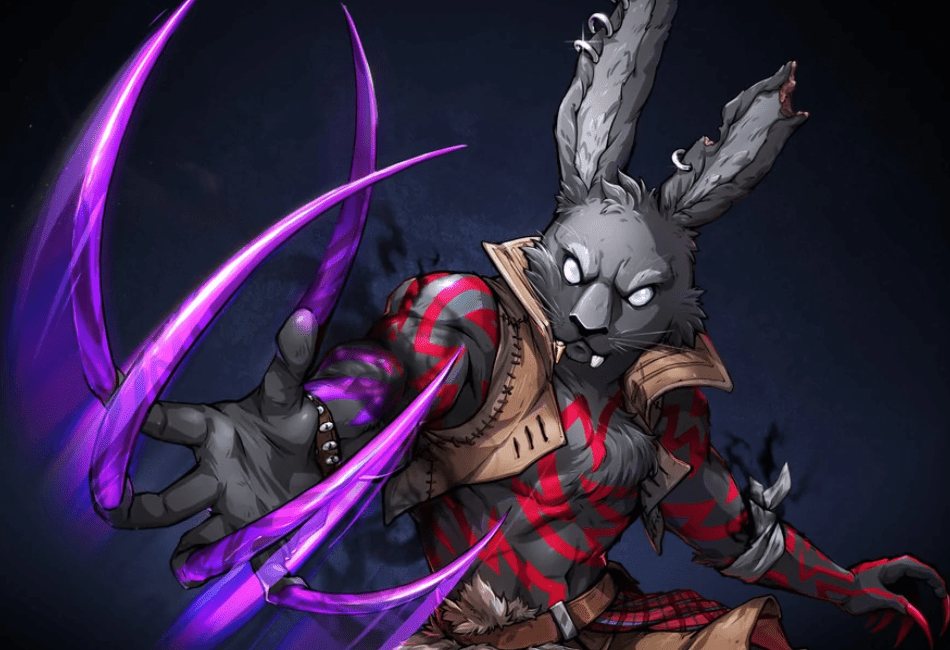The races of DnD include a range of fantastic options for players to customize their characters. Players can choose a race because of its cultural elements, fun appearance, or mechanical elements that work well with their selected D&D class.
A great option for players to consider comes in the form of the Harengon, a rabbit-like people hailing from the Fey. So, if you want to consider the Harengon for your next character, here is a Harengon 5e guide with everything you need to know about them.
Key Info Up Front
- Book: The Wild Beyond The Witchlight, Mordenkainen Presents: Monsters of the Multiverse
- Ability Score Increases: Increase one score by two and another by one, or increase three by one
- Size: Medium or Slow
- Languages: Common, Sylvan
- Homeland: Feywild
- Editions: 5e
Harengon Lore
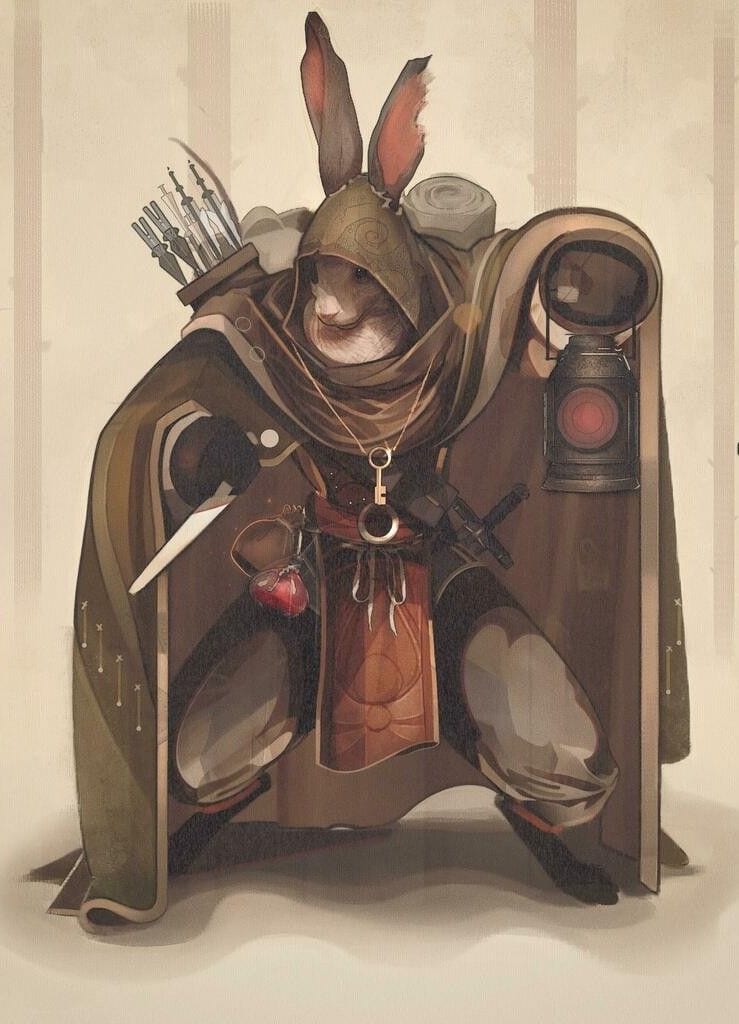
Harengon are rabbit-like creatures that walk bipedally. They are covered in fur and have tall ears. They come in a range of colors, but their fur tends to be neutral, with browns, greys, white, and black being very common. They are well known for their keen senses and powerful legs that allow them to track and jump better than most races in the Feywild.
The Harengon are also well known for their naturally energetic personalities. They are constantly ready to spring into action, whether that is to play with one another or fight for their lives. Because of their powerful legs and superior senses, they tend to favor games of physicality that help them burn all of their excess energy. In particular, they love games like tag or hide and seek.
Their nature tends to lead Harengons to become free-willed travelers that journey across the lands, finding new things to interest them. They are not known to stay in one place for long, which has led to the failure of the Harengons to form a society of their own. So, they instead tend to spend their lives as vagabonds. However, they love staying with groups of people on their travels, whether other Harengons or a smattering of disparate races.
The group they travel with plays a large role in defining their personalities. If the Harengons travel with heroes and brave adventurers, they will become brave themselves. If they traveled instead with roving bandits, they would become more evil-aligned and mean-spirited. Some Harengons prefer to travel alone, and if they do, they tend to become freedom-loving and laidback.
Harengon Traits
Harengons are present in two official supplement books but have the same traits. When you roll a Harengon character, you get to pick your ability score increases, which helps them be a solid choice for any class. When doing so, you’ll have the choice of either increasing three ability scores by one each or increase two ability scores, one by two and the other by one. They are either Medium or Small sized and come with a base walking speed of 30 feet. Harengons also enjoy life spans of around one hundred years, slightly longer than many mortal races.
The first racial feature of Harengons is called Hare-Trigger. The feature is a universally great one that gives your character the ability to add their proficiency bonus to initiative rolls, helping them go as early as possible in combat encounters. Harengons also come with the feature Leporine Senses, which gives all of them a proficiency in Perception to highlight their innately heightened senses.
Another racial feature that accompanies Harengons is Lucky Footwork. This feature can be activated when you fail a Dexterity saving throw as long as your character isn’t prone and has a speed higher than zero. When you use this feature, you can roll a single d4 and add that to your rolled save.
The final racial feature of Harengon is Rabbit Hop. This feature is a bonus action that allows you to jump a distance of feet equal to your proficiency bonus times five. This movement does not provoke opportunity attacks by enemies and can be used a number of times equal to your proficiency bonus per long rest.
Roleplaying a Harengon
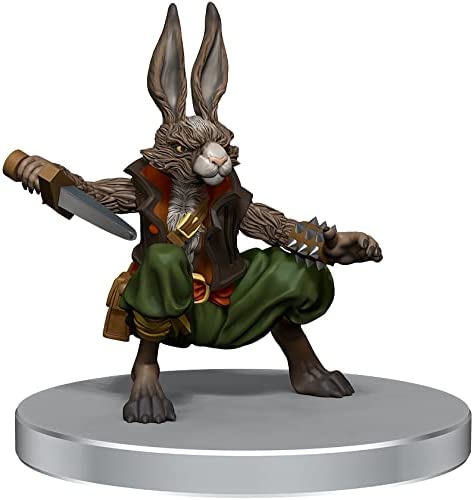
When roleplaying a Harengon outside of combat, you should highlight the energetic nature of the race. There are a few ways to go about this, depending on how you imagine your character growing up and who they were surrounded by.
Either way, it is important to highlight their energy by having their attention span be short and quickly switch back and forth between objects or topics.
Their love for traveling also tends to mean that they don’t like using mounts. So, your Harengon should only use a mount in the most extreme of cases, such as if they need to go faster than they can run or need a mount to traverse certain conditions. S
ince Harengons don’t have their civilization, there isn’t too much else for you to draw on from the race itself. So, most of how your character acts will have to be derived from their chosen background and class.
The Best Harengon Classes
Bard
I love the flavor of the Bard class for Harengons. With the nature of Harengons to wander across the lands, they tend to be in a great position to gather inspiration for stories, songs, or poems.
The energetic personalities of Harengons also lend themselves very well to the stereotypically jovial and carefree class. However, their struggle to keep their attention on one thing can leave them with dozens of incomplete songs or other artistic endeavors.
Mechanically, the Bard class also benefits a lot from Harengon’s racial features. Bards have a lot of spells that focus on buffing their allies or debuffing enemies, so the higher initiative rolls can help you get set up early on in the encounter.
Their Rabbit Hop is also very useful for Bards to focus on their positioning and get out of bad situations.
Subclasses
- College of Creation (Tasha’s Cauldron of Everything): This subclass is a strong Bard subclass that makes a lot of sense for a Harengon to play. It allows them to create objects through their magic, and with the eclectic focus of the race, creating a variety of objects to entertain themselves makes a lot of sense.
- College of Eloquence (Mythic Odysseys of Theros and Tasha’s Cauldron of Everything): This subclass emphasizes the Bard class’s core mechanics. It buffs up their Bardic Inspiration dice and improves their Charisma skills even more, so you never have to worry about failing a Persuasion or Deception check. This subclass also fits Harengons decently well as they would know a lot about dealing with different types of people from their travels.
- College of Glamour (Xanathar’s Guide to Everything): The College of Glamour subclass helps Bards fulfill more of a support role within their party. It also has some options for charming targets. This subclass can work as a Harengon if you re-flavor its elements derived from its Fey ancestry.
- College of Lore (Player’s Handbook): This subclass focuses on improving Bard’s skill proficiencies and magical knowledge. This subclass is fun to play and works well with a Harengon that picked up so many skills throughout their travels.
- College of Spirits (Van Richten’s Guide to Ravenloft): This subclass brings some randomness to the Bard class, which can be fun to play around with. However, it adds some cumbersome new bookkeeping elements to the class and doesn’t balance out its negatives with positives very well.
- College of Swords (Xanathar’s Guide to Everything): The College of Swords is about injecting some offensive martial abilities into the Bard framework. This doesn’t fit the Harengon too well, but the race’s Rabbit Hop feature does pair with it quite well.
- College of Valor (Player’s Handbook): This subclass is similar to the College of Swords, although it puts more emphasis on defensive abilities rather than offensive ones. This doesn’t fit the Harengon too well, but if it sounds fun to you, the race will still work with it.
- College of Whispers (Xanathar’s Guide to Everything): This subclass is a solid option for campaigns that rely heavily on roleplaying and social interactions. If your campaign doesn’t have too much of that to offer, however, I would avoid this subclass as it doesn’t offer much else. The dark nature of the subclass, however, does come with some fun roleplay opportunities, especially for a Harengon to explore where they got such sinister power from.
Druid
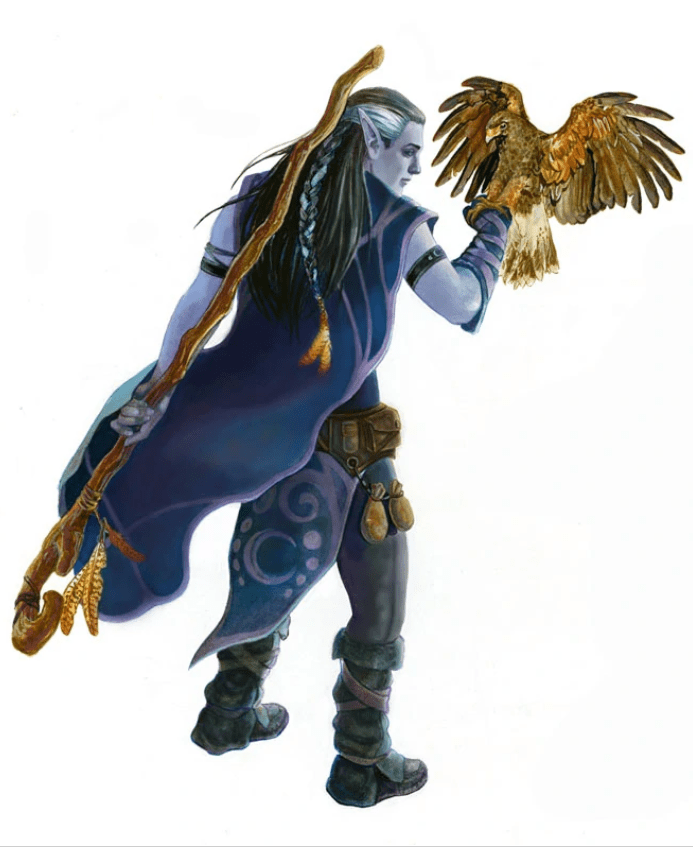
The Druid class generally feels like a great fit for a Harengon character. The race’s connection to the Feywild makes for a great motivation for their dedication to nature and working so well with some of its subclass options. Since Druids are a casting class, they also benefit extensively from the Harengon’s racial features that help them go at the start of the initiative order and maintain their positioning throughout the fight.
If you end up playing a Druid Harengon, you can also use the class to help determine your character’s personality. This can help motivate their desire to wander all across the world to experience the different types of nature, maintain the natural balance of the world, or even track down ancient power. There are so many ways that this can be adapted to customize your character, which is always great.
Subclasses
- Circle of Dreams (Xanathar’s Guide to Everything): This subclass attempts to focus on making the Druid a heal-focused utility member. While this sounds great on the surface, its options tend to be very situational and are so scattered in focus that it can be hard to make this class work strongly in one role for the party. However, if your party is made of other characters that also have less-focused builds, it can work decently well.
- Circle of Spores (Guildmasters’ Guide to Ravnica and Tasha’s Cauldron of Everything): Circle of Spores is all about Druids becoming powerful blaster characters with a range of offensive spell options. However, this is one of the most complicated Druid subclasses currently available, so I don’t recommend picking this option unless you are comfortable min-maxing a solid build to make it work as well as possible.
- Cult of Stars (Tasha’s Cauldron of Everything): If you want to play a Druid that is self-sufficient and very powerful, you’ll want to go with this subclass. The Cult of Stars has many strong damage options and healing abilities to keep themselves and their allies up and fighting. It also comes with an important player decision aspect that allows them to adapt to situations. The more mystical aspect of the subclass also works well with the Harengon’s Fey ancestry.
- Circle of Wildfire (Tasha’s Cauldron of Everything): The Circle of Wildfire focuses on honoring and respecting the important role that destruction plays in the natural cycle of life and death. They revere fire for its restorative properties, which are mechanically embodied by their reliance on fire damage. This subclass doesn’t make the most sense for a Harengon, but you can make it work if you roleplay the character correctly.
- Circle of the Land (Player’s Handbook): If the Druid class usually doesn’t spend enough time casting spells for you, this is the subclass you’ll want to look into. It replaces the class’ limited martial abilities to make them full spellcaster.
- Circle of the Moon (Player’s Handbook): Circle of the Moon is for Druids who want to use their Wild Shape feature for combat situations. This opens up some really fun and adaptable combat options, and it can be a fun subclass to pick up if that sounds fun to you. This subclass is especially strong as a Defender character because the hit points of the creatures that are Wild Shaped effectively act as a second hit point pool.
- Circle of the Shepherd (Xanathar’s Guide to Everything): This subclass can be difficult to make work well, but the reward for doing so is a unique and fun Druid option. It puts the class in a support role while emphasizing summoning spells. Since this works well with the Conjure Fey spell, it fits naturally with the Harengon, who would summon creatures from their homeworld.
Sorcerer
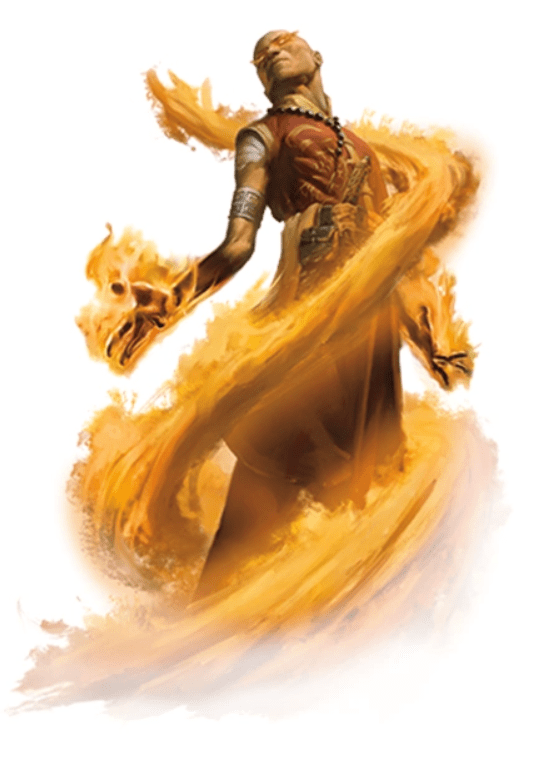
Sorcerers are characters that have the powerful magical ability inside of them. They will often have a difficult time containing or managing it properly, but its different subclasses also come with a range of fun and unique options.
This allows players to customize how they want to interpret the Sorcerer class so that it focuses on different aspects of magic in the Forgotten Realms. This can work well with Harengons that may have come to the new dimension with some Fey magic inside them that they can use to perform great acts.
Like the two above classes, Harengon’s racial features also work very well with the Sorcerer class. Boosting your initiative rolls will help ensure you get to go early in combat encounters to get any buffs, offensive options, or crowd control elements up and ready. T
he Rabbit Hop will also help you get into good positions and avoid bad situations, such as enemy creatures getting within melee range. The inner power of Sorcerers also provides a tremendous roleplaying opportunity as your character tries to control their power better or learn about its source.
Subclasses
- Abberant Mind (Tasha’s Cauldron of Everything): Aberrant Mind Sorcerers give a psionic theme to the class, allowing them to use mental abilities to attack and manipulate others psychically. It has some very strong options and is one of the best options for Sorcerers looking for more variety and options when it comes to their list of available spells.
- Clockwork Soul (Tasha’s Cauldron of Everything): This subclass can be a bit of a hard sell. It is focused on forcing order into the game, such as preventing enemy rerolls and improving minimum values for rolls. To make them work as well as possible, you’ll need to be very familiar with the rules of 5e. It also doesn’t make very much sense for a Harengon since the Feywild is renowned for how random, wild, and unpredictable it is.
- Divine Soul (Xanathar’s Guide to Everything): Divine Soul Sorcerers gain some of their powers from a divine source of power. This gives the Sorcerer access to spells from the Cleric spell list, which greatly improves their options. However, having so many spells to fit into a limited spell list can make it difficult to choose between all of the options. The flavor of this subclass can work with Harengons if you want it to, but I don’t think it fits as well as some of the other options available in 5e.
- Draconic Bloodline (Player’s Handbook): The Draconic Bloodline subclass is all about Sorcerers that gained their power from being distant relatives to a dragon of some kind. This subclass can have great damage output, but it is highly reliant on elemental damages, which tend to be very situational. A Harengon having dragon blood in its heritage also doesn’t make the most sense unless it is from a Fey dragon.
- Shadow Magic (Xanathar’s Guide to Everything): The Shadow Magic subclass tries to give the Sorcerer characters more stealth options through magical darkness effects. This subclass has some really unique and effective options and is a good way to interpret the Sorcerer class as a more sinister option for a Harengon that has looser morals.
- Storm Sorcery (Sword Coast Adventurer’s Guide and Xanathar’s Guide to Everything): The best part of this subclass is its fun flavor. A lot of its effects are cool sounding, but they mechanically don’t scale well or are too situational to be effective in most campaigns. If you want to play this subclass, I recommend talking to your Dungeon Master about how to give it just a slight buff so that you don’t feel like you aren’t performing as well as your party members.
- Wild Magic (Player’s Handbook): Wild Magic Sorcerers are chaos personified. They have such a difficult time managing the power in their bloodline that there is a chance whenever they cast a spell that they have to roll on a table of random effects. These effects range from casting a free fireball spell, regaining spell slots, or pink bubbles coming out of your mouth when you speak. This makes the subclass a lot of fun if you don’t get frustrated by dealing with randomness, and it presents some fun roleplay opportunities as your character tries to gain more control over their powers.
FAQs
Question: What books are Harengons in for 5e?
ANSWER: Harengons can be found in either the wild beyond the witchlight or mordenkainen presents: monsters of the multiverse.
QUESTION: WHAT IS A HARENGON IN DND?
ANSWER: A harengon is a bipedal rabbit-folk race.
QUESTION: ARE HARENGON CONSIDERED FEY OR HUMANOID?
ANSWER: Harengons are officially categorized as humanoid.
Harengon 5e Guide: Final Thoughts
Harengon are a fun race for players to experiment with. Their history hailing from the Fey is one that can be very interesting to roleplay around if your campaign features the Fey to any degree.
Their ability to be so molded by their background and class also gives players a lot of opportunity to customize how they want to roleplay a Harengon character.
So, if you’re looking for a fun race to help make your character unique or give them some cool mechanical boosts, the Harengon is a very strong option.
- Steel Defender 5e Guide - September 5, 2022
- Harengon 5e Guide - August 24, 2022
- Shambling Mound 5e Guide: The Most Terrifying Plant - August 21, 2022

